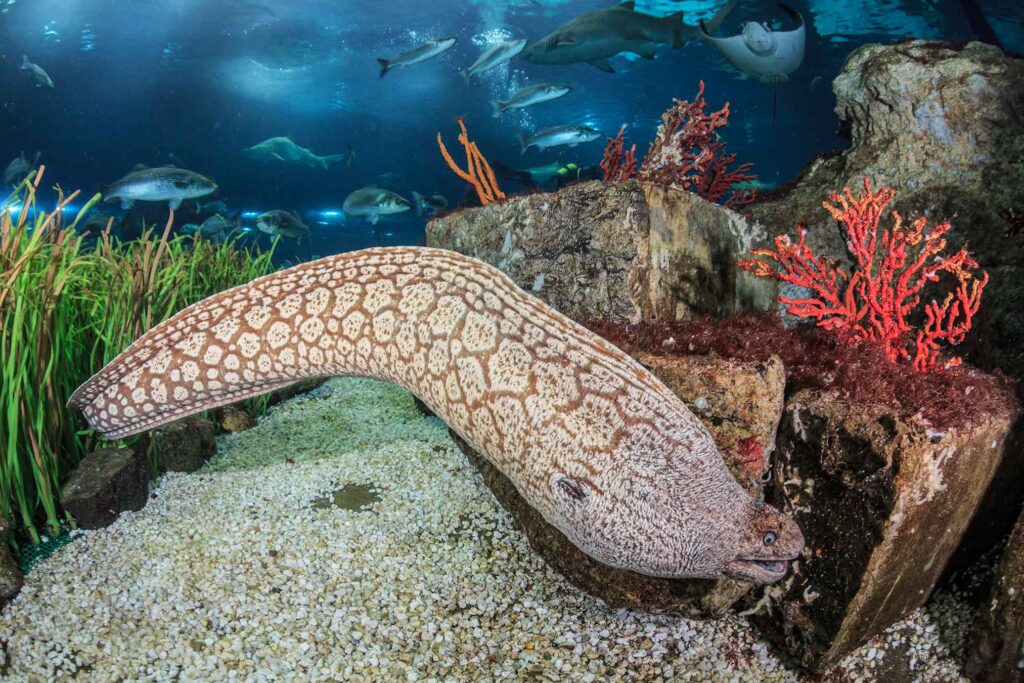
Mediterranean moray
Muraena helena
Maximum length

150 cm
feeding

Carnivore
Activity

Diurnal
The moray is a fish with a long, eel-like body with its dorsal, caudal and anal fins joined in a single one. Its skin is thick and viscous, without scales. Its colouring is yellow and brown and it warns other fishes of its toxicity.
It is a territorial, solitary species. It hides in cracks and holes in rocks and if it feels threatened it can be an aggressive fish, causing painful bites.
It feeds on fish, crustaceans and cephalopods and is therefore carnivorous. It likes to hunt at sundown.
Its reproduction is oviparous. It reproduces near the coast, between July and September. The eggs are pelagic and large (5 mm). After a few days the larva is born in an olive leaf shape and a size between 10 and 11 mm, with a long beak and a rounded caudal fin. After several larva stages, it adopts the adult morphology.
The moray is a fish that seeks refuge in the cracks and holes in rocks at depths of between 10 and 80 metres.
Interesting facts
Its blood serum is toxic and in Roman times was used to poison people. Despite this, its meat is considered excellent, but has to be cooked at over 75ºC. The Romans appreciated morays and kept them as pets in special pools. According to popular belief, they fed them with slaves.
Distribution
Conservation status
